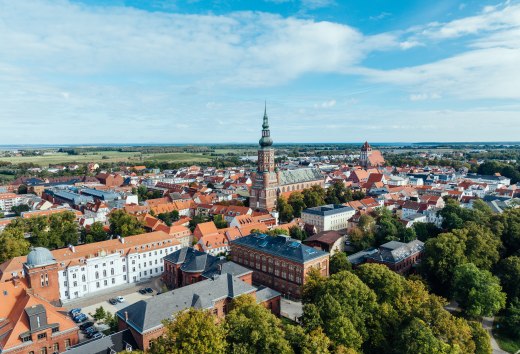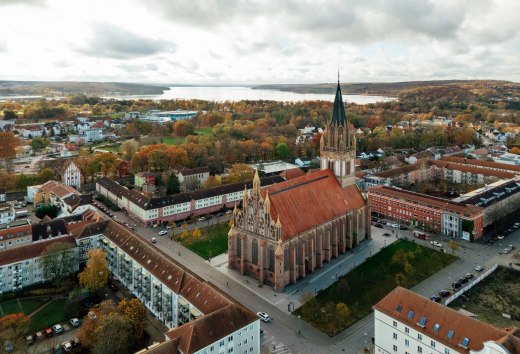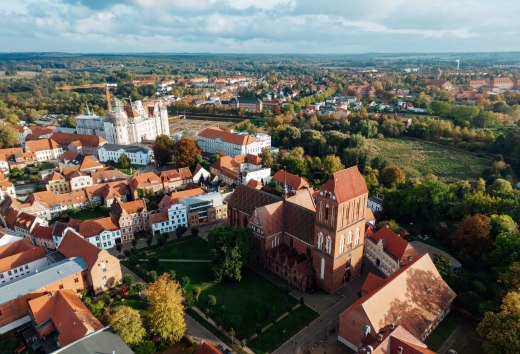Cities Steeped in History: In the Footsteps of Merchants and Dukes
Originality, distinctiveness, and a unique cultural heritage determine the character of the cities between the Baltic Sea and the Lake District. The Hanseatic cities of Rostock, Wismar, Stralsund and Greifswald captivate visitors with their imposing brick buildings and their proximity to the sea. The residential towns in the Mecklenburg Lake District enchant with elegant castles and parks, above all the state capital Schwerin with its fairy-tale castle on Lake Schwerin. Medieval authenticity, on the other hand, can be experienced in the four-gate city of Neubrandenburg and its perfectly preserved city walls.
State Capital Schwerin
Once a city where dukes resided, Schwerin is today the seat of the state parliament of Mecklenburg-Vorpommern. The oldest city in the state has lost none of its stately splendour of the “golden times”. In the midst of one of Germany's largest lakes rises Schwerin Castle, the city's landmark. There are other impressive buildings such as the City Theater, the State Art Museum, the neo-gothic Paulskirche church, the “Neues Palais” that served as a domicile for duke Friedrich or the Arsenal at Pfaffenteich, waiting to be discovered in the streets of Schwerin, not to mention other cultural riches the state capital has to offer.
Rostock and Warnemünde
A city trip to Rostock provides the experience of maritime city flair, the finest sandy beaches and tranquillity of the nature that surrounds it. The Hanseatic city has a historic old town and a harbour with many small stores, boutiques, cafes and restaurants. Its nearby Baltic resort of Warnemünde, with its kilometre-long white sandy beach, is an excellent destination for excursions. In the “Rostocker Heide”(Rostock Heath), the largest contiguous coastal forest in Germany, nature lovers will find colourful flora and species-rich fauna.
Hanseatic City of Wismar
In the footsteps of Störtebeker: The Hanseatic city of Wismar captivates with its medieval charm. Patrician houses, warehouses and offices are reminders of times gone by, yet their interior decoration has remained almost unchanged over many centuries. Guided city tours or boat trips are the best way to explore the historical significance of the city, which has been a UNESCO World Heritage Site since 2002.








